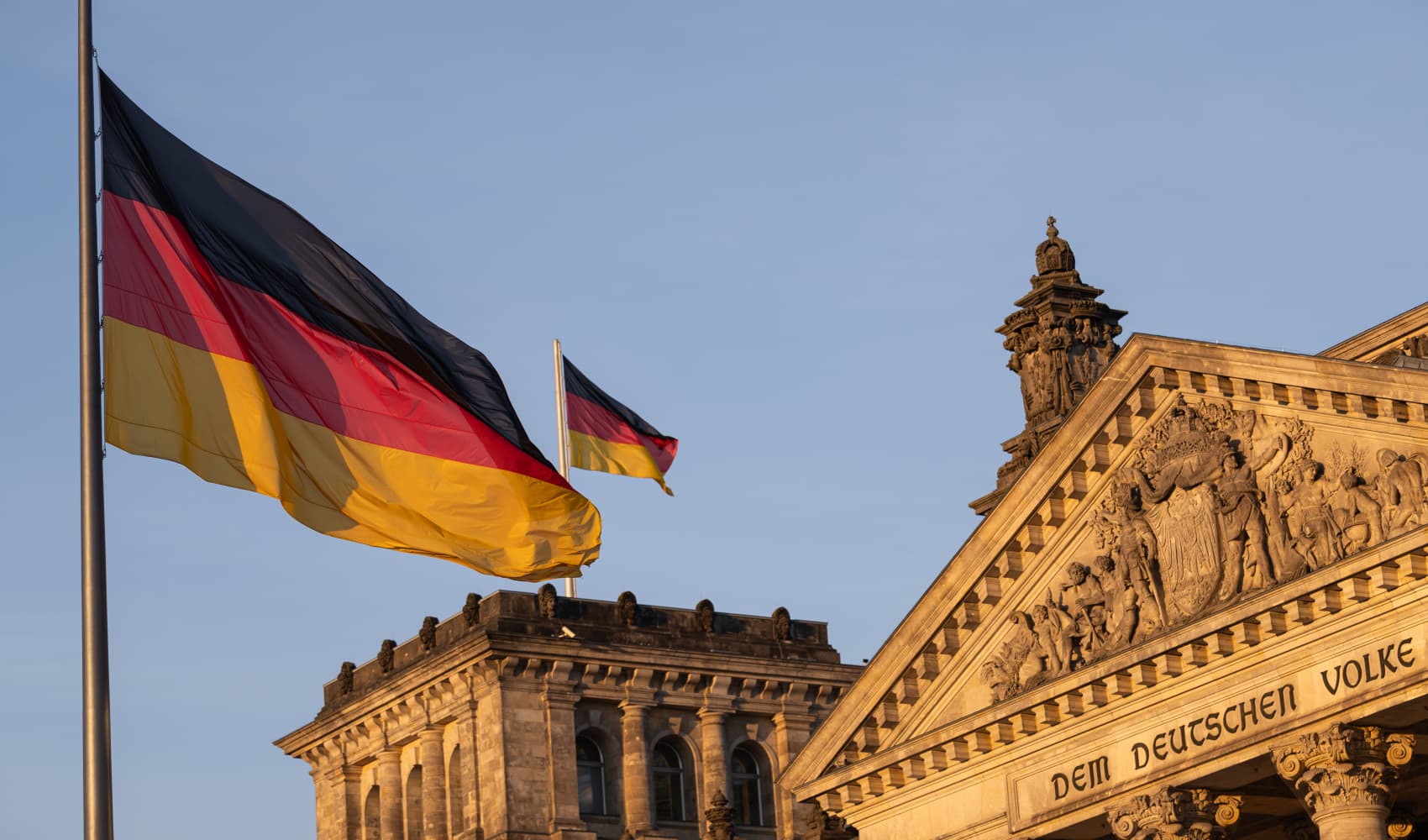German Inflation Dip: Is It Enough? April 2024 Analysis
German Inflation: A Slight Dip, But Is It Enough?
Introduction: A Closer Look at Germany's Inflation Picture
Okay, let's dive right in. Germany, the economic powerhouse of Europe, just released its latest inflation figures, and things are... well, a little complicated. The harmonised consumer inflation rate for April came in at 2.2%, according to preliminary data. Now, on the surface, that sounds like good news, right? A dip in inflation? Who wouldn't want that? But as usual, the devil is in the details, and this particular dip might not be as exciting as we'd hoped.
The Headline Numbers: What's the Fuss About 2.2%?
So, what exactly are we talking about? German harmonized consumer inflation clocked in at 2.2% in April. This is a slight decrease from the 2.3% recorded in March. But here's the kicker: economists were expecting a more significant drop, anticipating a reading of around 2.1%. It's like ordering a pizza and expecting a large, but getting a medium – it's still pizza, but it's not quite what you wanted, is it?
Economic Growth: A Glimmer of Hope in a Sluggish Economy
It's not all doom and gloom, though. The German economy managed to eke out some growth in the first quarter of the year. Preliminary data indicates a 0.2% expansion compared to the previous three-month period. While this might seem like a small number, it's a welcome sign after a period of economic stagnation.
Germany's Economic Rollercoaster: A History of Ups and Downs
Let's be honest, Germany's economy hasn't exactly been setting the world on fire lately. In fact, it's been more like a rollercoaster ride, constantly switching between growth and contraction. Throughout 2023 and 2024, Germany's GDP has been flipping between positive and negative territory. This uncertainty makes it difficult for businesses to plan and invest, which in turn can dampen economic activity.
Core Inflation: The Underlying Worry
Here’s where things get a bit more concerning. While the headline inflation rate saw a slight decrease, core inflation, which excludes volatile food and energy prices, actually increased.
The Core Story
Core inflation accelerated to 2.9% in April, up from 2.6% in March. This suggests that underlying inflationary pressures are still present in the German economy. In other words, even if energy prices stabilize, other goods and services are still becoming more expensive.
Services Inflation: Keeping a Close Eye
Another key indicator to watch is services inflation. Services make up a large part of the German economy, so changes in service prices can have a significant impact on the overall inflation rate.
Why Services Matter
The report also mentions the closely-watched services print. Unfortunately, the provided text is truncated, so we don't have the exact figure. However, understanding services inflation is crucial because it can indicate persistent inflationary pressures, especially if wages are rising.
The ECB's Dilemma: To Cut or Not to Cut?
These inflation figures put the European Central Bank (ECB) in a tricky spot. The ECB has been trying to bring inflation down across the Eurozone, and they've been using interest rate hikes as their primary weapon.
The Rate Hike Debate
The question now is whether the ECB will continue to raise interest rates or whether they'll start to cut them. If inflation remains stubbornly high, the ECB might be forced to keep rates elevated, which could further dampen economic growth. On the other hand, cutting rates too soon could risk reigniting inflation.
Impact on Consumers: Feeling the Pinch?
Let's not forget about the average person on the street. Inflation erodes purchasing power, meaning that people can buy less with the same amount of money. Have you noticed your grocery bill creeping up lately? Or that filling up your car is more expensive than it used to be? That's inflation at work.
The Squeeze on Wallets
Even a seemingly small increase in prices can add up over time, especially for low-income households. And with core inflation rising, consumers may continue to feel the pinch for some time to come.
The Global Context: What's Happening Elsewhere?
It's important to remember that Germany's inflation isn't happening in a vacuum. Global factors, such as supply chain disruptions, energy price shocks, and geopolitical tensions, can all influence inflation rates around the world.
A World of Inflation
Many other countries are also grappling with high inflation, which makes it more difficult for Germany to address its own inflation problems in isolation.
The Role of Government Policy: What Can Be Done?
Governments can use a variety of tools to try to control inflation. These include fiscal policies (such as taxes and government spending) and supply-side policies (such as measures to boost productivity and reduce supply chain bottlenecks).
Policy Options
However, government policies often take time to have an effect, and there's no guarantee that they'll be successful.
The Future Outlook: Will Inflation Continue to Dip?
Predicting the future is always a risky business, but economists are constantly trying to forecast where inflation is headed.
The Uncertainty Factor
The outlook for German inflation depends on a variety of factors, including global energy prices, the strength of the German economy, and the actions of the ECB. Only time will tell whether the recent dip in inflation will continue or whether inflation will remain elevated.
Expert Opinions: What Are the Economists Saying?
It's always useful to hear what the experts have to say about these economic trends. Economists have different perspectives and models, and they can offer valuable insights into the factors driving inflation and the likely future path.
Diverging Views
Reading a range of expert opinions can help you get a more balanced understanding of the situation.
Business Implications: How Are Companies Responding?
Inflation affects businesses in a variety of ways. Rising input costs can squeeze profit margins, and companies may need to raise prices to maintain profitability.
Business Strategies
Businesses also need to consider how inflation will affect consumer demand. If consumers become more price-sensitive, companies may need to adjust their marketing and pricing strategies.
Investment Strategies: How to Protect Your Portfolio
Inflation can also have a significant impact on investment portfolios. Rising inflation can erode the real return on investments, so investors need to consider strategies to protect their wealth.
Investment Protection
Some common strategies include investing in inflation-protected securities, real estate, and commodities.
The Long-Term Perspective: Is This Just a Temporary Blip?
It's important to keep the current inflation situation in perspective. Is this just a temporary blip, or is it a sign of a more fundamental shift in the global economy?
Historical Context
Looking at historical inflation trends can help us understand the context of the current situation and assess the likelihood of different future scenarios.
Conclusion: Navigating the Inflationary Landscape
So, where does all of this leave us? German inflation dipped slightly in April, but not as much as expected. Core inflation is still rising, and the ECB faces a difficult decision about interest rates. The German economy is showing signs of growth, but it's still facing significant challenges. For consumers, businesses, and investors, navigating this inflationary landscape requires careful planning and a close eye on the latest economic developments. The road ahead is uncertain, but understanding the key factors at play is the first step toward making informed decisions.
Frequently Asked Questions (FAQs)
- 1. What does "harmonised consumer inflation" mean?
- Harmonised consumer inflation is a standardized measure of inflation used across the Eurozone to allow for accurate comparisons between different countries. It ensures that inflation is calculated using the same methodology in each country.
- 2. Why is core inflation important?
- Core inflation is important because it excludes volatile items like food and energy, providing a clearer picture of underlying inflationary pressures in the economy. It helps policymakers understand if inflation is broad-based or driven by temporary factors.
- 3. How does the ECB control inflation?
- The ECB primarily controls inflation by adjusting interest rates. Raising interest rates makes borrowing more expensive, which can cool down economic activity and reduce inflationary pressures. Conversely, lowering interest rates can stimulate the economy.
- 4. What can individuals do to protect themselves from inflation?
- Individuals can protect themselves from inflation by investing in assets that tend to hold their value or increase in value during inflationary periods, such as real estate, commodities, or inflation-protected securities. Budgeting and reducing unnecessary spending can also help.
- 5. How does Germany's inflation rate compare to other European countries?
- Germany's inflation rate is generally compared to the average inflation rate across the Eurozone. While Germany's rate might be slightly higher or lower than the average at times, the overall trend is usually similar, as the ECB's monetary policy affects all Eurozone countries.



